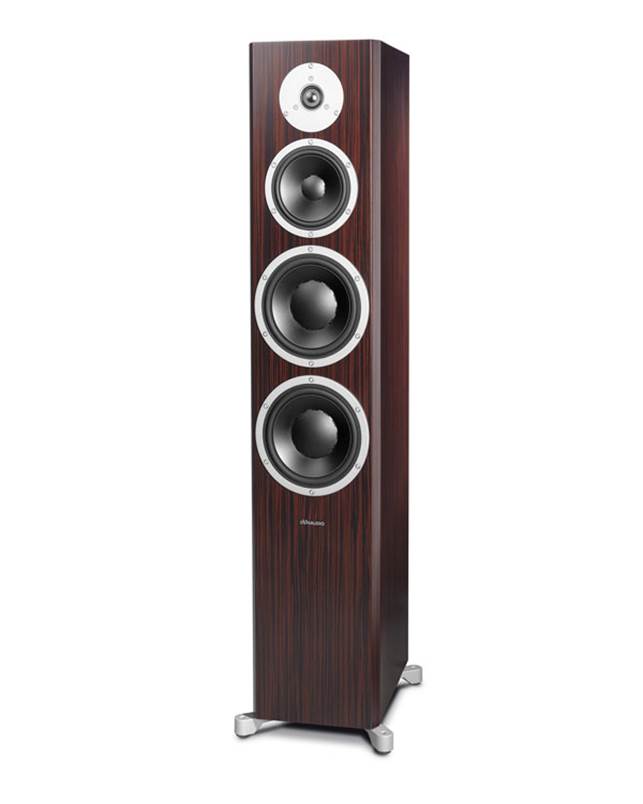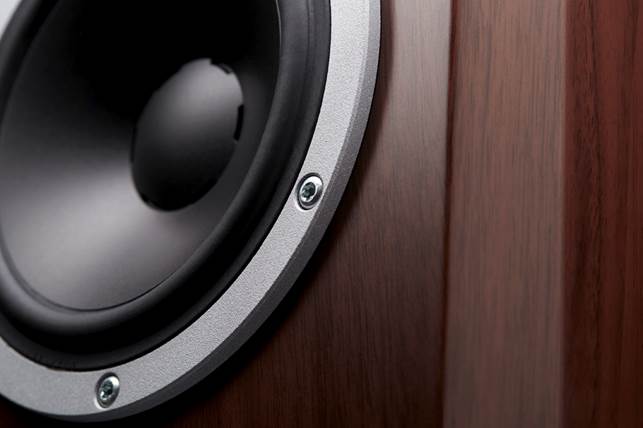The Excite speaker range from Denmark
aims to eke out high quality sound from modestly-priced systems
At just over one-metre tall, the X38 is the
largest floorstander in Dynaudio’s latest Excite range. This is a new series of
entry-level speakers from the Danish company, all designed to be easy to drive,
so that cost of ownership is not hampered by the need for meaty and expensive amplifiers.
Top of the range it might be, yet this handsome three-way is just $4,792.84 and
promises to deliver proper ‘grown-up’ sound via its complement of proprietary
drivers.
Speaking with dealers, to garner opinions on
which speaker models are currently proving popular with UK consumers, reveals that
Dynaudio has hit an interesting price-point with the X38. While there are
plenty of compact floorstanders to choose from at around $3,363.40 – such as
Neat’s popular Motive SX1 ($3,170.00) and PMC’s twenty.23 ($3,867.91) –
acquiring a more ambitious hi-fi monitor often requires digging much deeper into
one’s bank account.
As one dealer pointed out, B&W’s venerable
804, once a hugely popular model at $4,624.67, today wears a $9,669.77 price
tag in its 804D guise with its much more costly diamond tweeter. The Excite
X38’s nearest rival might be B&W’s $5,045.10 CM10 which is a little smaller
and more demanding of a partnering amplifier.
Since Excite models are clearly aimed at
style-conscious consumers who might choose with their eyes as well as their
ears, this X38 looks considerably more sleek and modern than the 380
floorstander ($9,501.60) we tested last year from Dynaudio’s more longstanding
Focus series. Its baffle looks cleaner thanks to the use of magnetically-attached
grilles while the fact that it’s also relatively narrow at 235mm makes it more
living-room friendly for house-proud audiophiles who insist that loudspeakers
must not visually dominate their living rooms. It’s 175mm shorter, 40mm
narrower and 50mm shallower than the Focus 380, and just two-thirds the weight
at 22kg – but I wouldn’t have expected it to be only half the price.
With its pair of 180mm woofers and 110mm
midrange driver, married to a 27mm soft-dome tweeter, it looks considerably more
expensive than it is.
Says Dynaudio’s product manager Roland Hoffmann:
‘For our new Excite models we’ve improved our woofers to give them more headroom
and focused on the crossover design, to ensure easy amplifier matching. We’ve
also altered the phase relationship of the drivers, adjusting directivity
slightly upwards towards the listener. We think this improves image staging.
Many small-ish floorstanders sound good at knee-height and consequently benefit
significantly from being slightly tilted back. Try it!’

A
pair of 180mm woofers is married with a 110mm midrange driver and 27mm fabric
dome tweeter in this purposeful-looking three-way reflex floorstander
Bi-writing ‘Not the way to go’
The X38’s twin long-throw woofers and midrange
driver have supple rubber surrounds and one-piece cones formed for smooth
dispersion. They are made of Dynaudio’s magnesium silicate polymer [MSP] for
light weight and high rigidity. The drivers’ chassis are die-cast aluminium, and
as with the drivers in the Focus 380 feature neodymium magnets and large but lightweight
voice coils made of aluminium.

Dynaudio
Excite X38 Review 1
The company sets great store in its use of
aluminium wire instead of copper for its voice coils, which allows for more windings
and a larger coil diameter without increasing mass. The woofers hand over to the
midrange driver at 550Hz which in turn crosses over to the tweeter at 2kHz. The
X38’s 27mm tweeter has a silk dome treated with a proprietary coating; an
aluminium voice coil suspended in magnetic oil (ferrofluid) to maximise power
handling and improve the dome’s excursion capability; and a damping chamber
integrated into the rear of the assembly to act as an acoustic absorber,
reducing back-wave energy.
While this 42-litre three-way is generously
appointed, you’ll only find a single set of input terminals at the rear.
Dynaudio has long eschewed bi- or tri-wiring. To quote the company’s
literature: ‘Our loudspeakers feature carefully fine-tuned crossovers, optimised
using selected parts and advanced circuitry to achieve a truly balanced and
smooth frequency response. Therefore, dividing the frequency sections through
bi-wiring or bi-amping is neither beneficial nor optional.’

Dynaudio
Excite X38 Review 2
On this subject Roland Hoffmann comments
further: ‘We aim for our drivers to have balanced frequency roll-on/roll-off
characteristics so we don’t have to use steep filters to suppress unwanted colorations
or resonance peaks. We favour overall impedance correction, and design most of
our crossovers as a 6dB filter, adjusting and fine-tuning them individually for
every model. Separating such a design, bridging across its sections with metal
strips (for the majority who will use single lengths of speaker cable) is
really not the way to go.
The X38’s integral base feet afford excellent
stability whether on hard or carpeted floors. The speaker can stand either on resonance-absorbing
rubber feet or four easy-to-adjust spikes